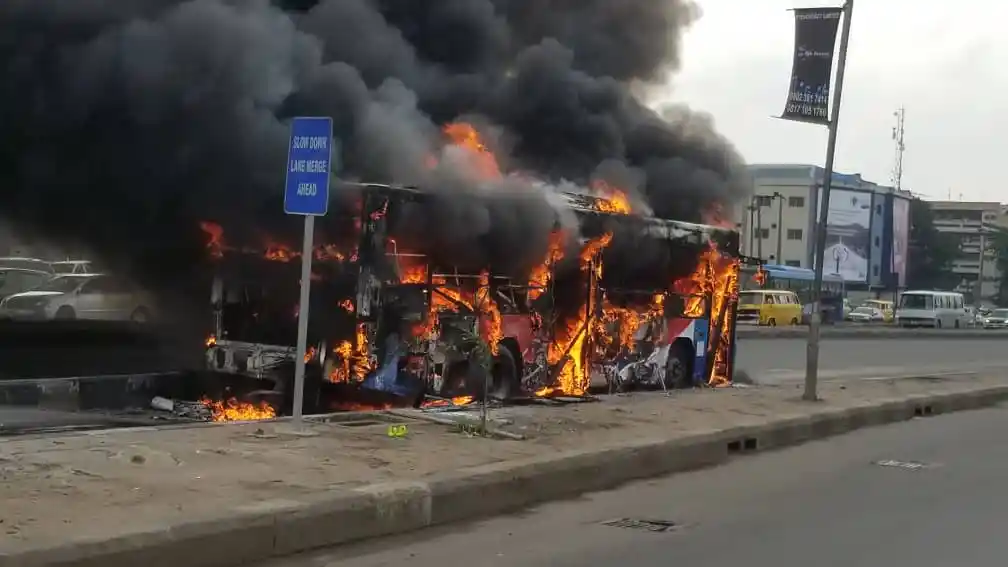The tranquility of a Saturday morning in Maryland, Lagos State, was shattered by a dramatic incident involving a Bus Rapid Transit (BRT) vehicle en route from Ikorodu to CMS. The bus, carrying an unspecified number of passengers, abruptly erupted in flames, sending commuters scrambling for safety and causing widespread panic. Eyewitness accounts paint a picture of a sudden and terrifying ordeal, with the driver and conductor allegedly abandoning the vehicle at the first sign of trouble, leaving their passengers to fend for themselves.
The initial stages of the incident seemed innocuous enough. Passengers reported noticing a light plume of smoke emanating from the driver’s side of the bus. Many initially dismissed it as exhaust fumes from nearby vehicles, a common occurrence in the bustling Lagos traffic. However, this seemingly harmless smoke quickly intensified, transforming into a thick, ominous cloud that signaled imminent danger. Realizing the gravity of the situation, passengers reacted swiftly, evacuating the bus before it was fully engulfed in flames. This quick thinking and decisive action averted what could have been a tragic loss of life, as no injuries were reported.
While the passengers escaped physical harm, the incident left them shaken and indignant. Their escape was marred by the alleged actions of the driver and conductor, who reportedly fled the scene without assisting or ensuring the safety of their passengers. One passenger recounted the incident with palpable anger, accusing the bus operators of knowingly putting lives at risk by operating a faulty vehicle. This alleged negligence has fueled outrage and raised serious questions about the safety standards and operational practices within the BRT system.
The incident drew a swift response from emergency services. Officials from the Nigeria Police Force, the Lagos State Traffic Management Authority (LASTMA), the fire service, and local security personnel converged on the scene to contain the blaze and manage the ensuing chaos. Their coordinated efforts successfully extinguished the fire and secured the area, preventing further damage or disruption. However, as of the initial reports, the exact cause of the fire remained undetermined, leaving room for speculation and highlighting the need for a thorough investigation.
The incident has brought the safety of public transportation in Lagos into sharp focus. The BRT system, designed to provide a safe, reliable, and efficient mode of transport for the city’s teeming population, has been plagued by occasional incidents, raising concerns about maintenance standards and operational procedures. This latest incident underscores the urgent need for a comprehensive review of safety protocols and a renewed commitment to ensuring the well-being of commuters. A thorough investigation is crucial not only to determine the cause of this particular fire but also to identify any systemic issues that may contribute to such incidents and implement preventive measures.
The burning BRT bus serves as a stark reminder of the potential risks inherent in public transportation and the crucial role of responsible operators and effective oversight. The alleged abandonment of passengers by the driver and conductor raises serious ethical and legal questions that demand a thorough investigation and appropriate action. The incident also highlights the vital importance of passenger awareness and preparedness. The swift and decisive action of the passengers in evacuating the bus undoubtedly prevented a potentially catastrophic outcome. This incident underscores the need for ongoing public safety campaigns that emphasize the importance of vigilance, preparedness, and quick thinking in emergency situations. The investigation into this incident should not only focus on determining the technical cause of the fire but also on addressing the broader issues of operator responsibility, regulatory oversight, and public safety awareness that are essential to ensuring a safe and reliable public transportation system.


